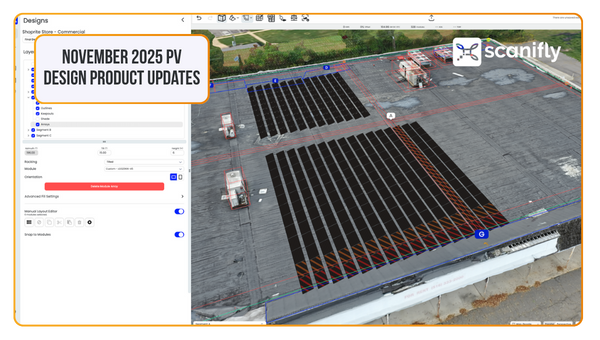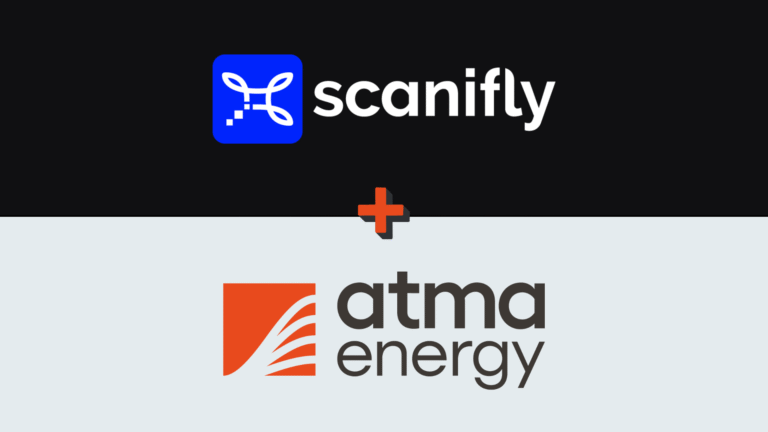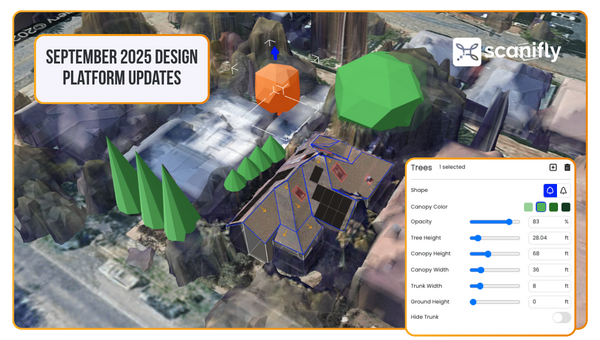In the competitive solar installer market, many companies chase rapid growth at the expense of quality. SunnyMac Solar has taken a different approach. During a recent Scanifly webinar, SunnyMac’s leadership team—CEO Matt MacFadden and Vice President Matt Mark—shared insights into how they’ve built a thriving EPC operation across four states while maintaining their unwavering commitment to quality and customer satisfaction.

SunnyMac’s Origin Story: A Foundation Built on Purpose
Matt MacFadden didn’t start his career planning to build one of the Mid-Atlantic’s most respected solar installation companies.
After working in construction with his brother-in-law while pursuing his MBA, MacFadden discovered a passion for electrical work—specifically, “making the lights turn on.”
This revelation, combined with reading Paul Roberts’ “The End of Oil,” provided MacFadden with foresight into the future of renewable energy. He established three fundamental goals for his career path:
- Find something enjoyable
- Serve a real purpose
- Give customers what they want
“If you’re going to run a good business, you have to give customers what they want,” MacFadden emphasized. “We’re providing electricity at lower rates to customers, and you need to make sure that you follow through on that.”
Scaling Quality Across Four States
Today, SunnyMac operates across Delaware, Maryland, Pennsylvania, and New Jersey, with physical locations in Wilmington (DE), Marlton (NJ), and Bethlehem (PA). With approximately 170 employees in the US and another 35-40 in the Philippines supporting various business functions, SunnyMac has established itself as a regional leader in solar installation.
The company’s expansion strategy remains focused on deepening its presence in existing territories rather than rapid geographic growth—a deliberate choice that aligns with their quality-first philosophy.
The Human Element in Solar
When discussing what makes SunnyMac stand out to potential sales partners, Matt Mark emphasized the importance of the human element: “We’re human. We make mistakes. But we always try to do a good job and continually evolve in what we do.”
This approach reflects the company’s values-driven culture. Rather than focusing solely on rapid growth at all costs, SunnyMac prioritizes creating lasting relationships built on trust and quality execution.
“Numbers and quantitative data are awesome,” Mark noted, “but I think you need a unique combination of qualitative and quantitative traits. You have to have people who can talk to people. You have to have people who can relate to a customer and understand that the investment they’re making in solar is an investment in us as well, which is why we always aim to humanize our interactions every step of the way.”

Technology as a Quality Enabler: The Scanifly Partnership
A critical component of SunnyMac’s operational excellence is their strategic use of technology—particularly Scanifly’s design software. The partnership has evolved over five years, helping SunnyMac:
- Maintain installation quality while scaling operations
- Eliminate fitment issues completely
- Streamline the transition from initial design to installation
- Support front-end design processes for accurate proposals
“We’ve worked great with Scanifly, using their drone design software for the past 5 years, but our partnership has become even more valuable now that they support our front-end design processes as well,” Mark explained. “The evolution of the Scanifly software and what we’re currently building out has been beyond what was expected.”
MacFadden provided concrete examples of how Scanifly’s drone-based design technology has improved their operations:
“Since using drones and Scanifly for surveys and design, I don’t even hear about [fit issues] anymore. Things just fit… it makes the process work so much smoother, having that accurate design done when you go to the install.”
Before implementing drone technology, SunnyMac experienced fitment issues on 3-5% of installations, creating costly change orders, customer frustration, and sales commission complications. With Scanifly’s drone-based 3D modeling, these problems have virtually disappeared.


Avoiding Common Industry Shortcuts
MacFadden highlighted several shortcuts that many solar EPCs take when maximizing short-term profits, which ultimately damages their long-term reputation:
- Skipping site surveys
- Relying solely on satellite imagery
- Bypassing proper roof analysis
- Sacrificing quality to meet price targets
“When you focus solely on generating revenue, you naturally cut corners,” MacFadden warned. “I think, as a good business, you have to look at how to deliver a quality project to the customer and then set your price afterward. Not before—don’t set a low price in the market and try to figure out how do I get there? And how do I get there quickly? That’s when the wheels just start falling off.”
The Evolution of Solar Design Technology
SunnyMac’s journey with solar design technology illustrates the industry’s evolution:
- Early days: Manual hand measurements with a tape measure and SunEye for shading, requiring on-roof time for every project
- Middle phase: Aurora’s software using satellite imagery and LiDAR
- Current approach: Scanifly’s PV design and field ops platform: PrelimDesign™ for front-end layouts and DroneDesign™ for accurate, comprehensive site assessments and final designs
Matt MacFadden explains it, “We used SunEyes on the roof for site surveys 10 years ago. The next evolution to generate a proposal design before the sale was Aurora. Now, with Scanifly, it’s even better. The drone modeling is something we’ve been using for site surveys for a long time because we want to make sure that what we design and engineer is going to fit on the roof the day of the install.”
Building Trust Through Transparency
When handling customer issues, SunnyMac’s approach is refreshingly direct: “I think you have to approach it with honesty,” MacFadden said. “If you make a mistake, you have to own it. Time and time again, I’ve seen people skirt around the truth or make excuses.”
This transparency extends to their sales partners as well. By providing clear communication and accurate information, SunnyMac builds long-term relationships with both customers and sales organizations.
Looking Ahead: The Future of Solar Operations
Looking forward, MacFadden identified standardized permitting through SolarApp+ as a potential game-changer for the industry, with the goal of shortening project timelines while maintaining quality.
Mark expressed cautious optimism about emerging technologies like AI, particularly for design processes and customer communication. However, he emphasized the importance of the human element: “I have a good stable of employees who excel at building rapport with our customers. This is often a differentiator for us.”
The Bottom Line: Focus on Quality
When offering advice to new installers or sales organizations entering the solar industry, MacFadden straightforwardly recommends: “Focus on quality. Don’t cut corners. Don’t chase the money. Make sure you’re providing a good product, and you’re giving your customers what they want and need.”
Mark added two key recommendations:
- “Invest in training early.”
- “Partner with the right EPC.”
As the solar industry continues to mature, SunnyMac’s approach offers a blueprint for sustainable growth. By leveraging technologies like Scanifly’s drone and design solutions while maintaining a relentless focus on quality and customer satisfaction, they’ve built a resilient operation that stands apart in a crowded marketplace.






